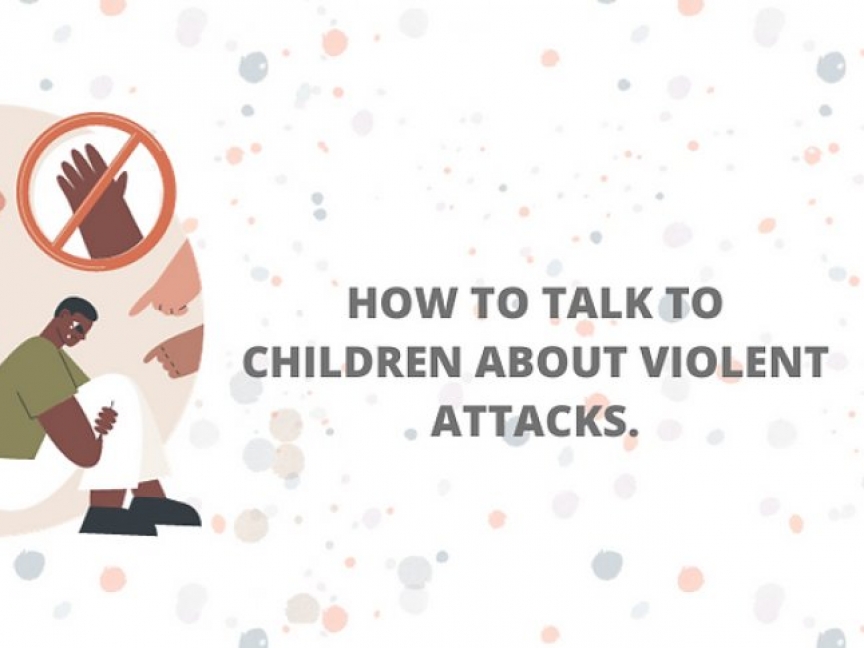Blog
How to talk to children about violent attacks.

 |
Caroene Santos Murray |
We as a society are scared by the latest violence here in Dublin -IE.
So here are some tips on how to talk to children in this kind of situations.
When such shocking events happen, there is a tendency to point blame to appease the feeling of insecurity that invades us. But we know well that the problem is complex and that there are many aspects at play behind these aggressors. However, the solution is a collective responsibility and can only be found with the involvement of everyone – family, school, State, media and each one of us.
It is essential that children and adolescents have a “channel of conversation, trust and openness with their parents, in which they are not afraid to speak, of being punished, judged. Thus, they are more likely to seek out their parents in worrying situations or when they are distressed.
We don't need to start explanatory conversations with the children deliberated, this is an adult matter so we don't need to bring then this direct information, but many children hear, see at the news, and receive details from their friends at school, etc., so when the child knows what is happening is when we are going to talk to then.
1-First understand what your children already know about the situation
Firstly, it is important, before speaking, to listen. In other words, start by asking the child what they know about and how they understand this information and, mainly, which points may be confused or poorly explained.
This way, you will be able to better understand what to say and know how to choose which words to use so that the child understands the situation.
2- Embrace and name the child’s feelings
A child does not always know how to understand their perception of things. Therefore, the second step after listening to them is to be able to name the feelings they have. Whether it's fear, insecurity, sadness, don't be afraid to discover together with your child how they feel. Parents are facilitating bridges for their children and it would be no different here.
3- Use appropriate language for the child’s age
In order not to increase confusing or bad feelings - or leave the child even less informed - always try to explain what is happening in a way that they can understand. Generally, younger children do not need details, while older children may require greater care in the explanation.
4- Be honest, but avoid scaring the child
There is no need to detail situations or moments that may sound terrifying to the child. Therefore, if necessary tell about incidents, and even cases of hospitalization or death, but avoid visual details. Take advantage and be truthful, saying that these events are rare and countering them with positive information.
5- Give the child a sense of control
Tell the child what is already being done in the community regarding the actuation and reinforce that there are people working to ensure their safety.
6 - Give them the freedom to always talk about the situation
Do not treat the conversation about this episode as a single conversation with the child. Let them know that they can contact you with any other questions they needs. Open dialogue windows even for difficult subjects.
7- Show that you heard what the child said
Create interaction in dialogue with the child. To do this, you can repeat their question in your answers, and show empathy that you have assimilated what they asked. Don't have answers ready before the child asks the questions.
8- Don't minimize your fears, but be careful not to transfer them
The scenario of insecurity for parents is enormous, but care is needed in order not to pass on their possible fears about the situation to the child. Therefore, do not disregard your fears, but be careful so that they do not confuse your child even more.
9- Remind children who their protectors are
Parents, older siblings, teachers, grandparents and other people around the child need to be in the conversation. This way, they will be able to understand that there is a core that seeks to protect them at all times. Remember this in the conversation.
10- Tell them about measures to prevent attacks from happening again
Again, depending on the child's age and understanding, explain in a didactic way about actions that are already taking place to combat attacks.
11- Discuss digital media with older children
If the child already uses social networks and the Internet, special attention is needed. Therefore, instead of prohibiting or causing a negative reaction to the use of digital media, include the subject in the conversation with the child. Monitor it, but explain why you are doing so. And don't forget to mention the importance of informing an adult of any act of violence or bullying that may happen on your networks.
12- Make conversations like this a routine
There is no point in having a single dialogue with the child about this or other topics.
Parents and guardians must be available to their children whenever they need them. But for this to happen, a strong bond of trust must be created between the two.
Finally, don't forget: if you have difficulty approaching this situations with a child, seek specialized help from an educator or mental health professional, such as psychologists, we deal with parental guidance and strategies to help parte ta when they need.
_____________________________________________
Caroene Santos Murray
Clinical Psychologist - Children and adults
Perinatal and Parental Psychologist
|
Follow us on Instagram |
 |



